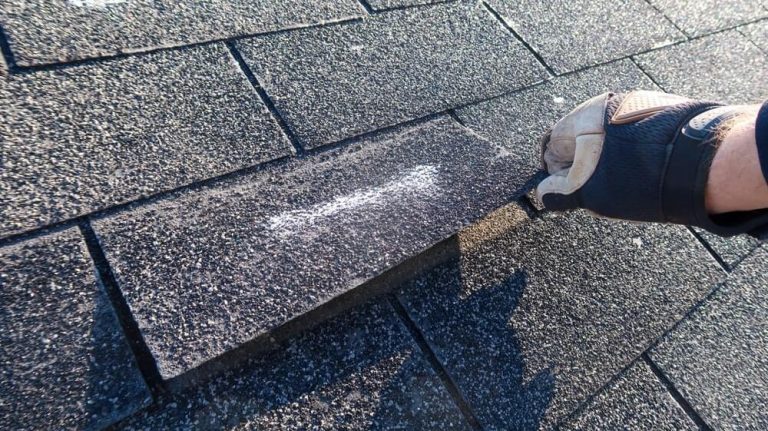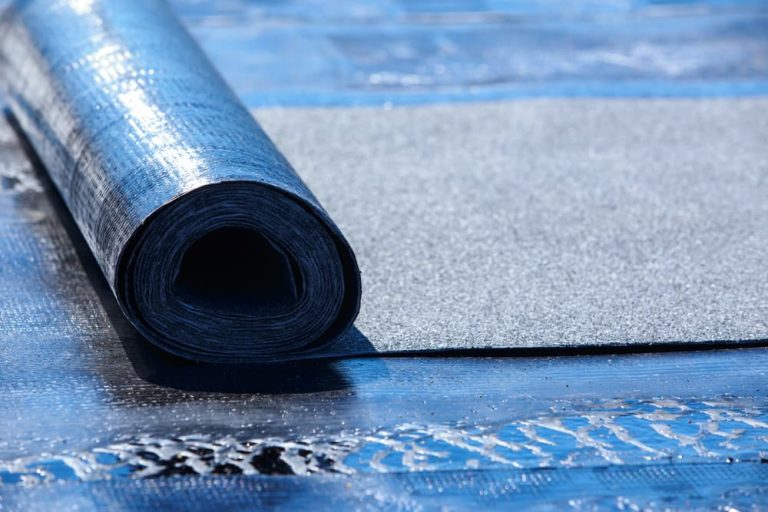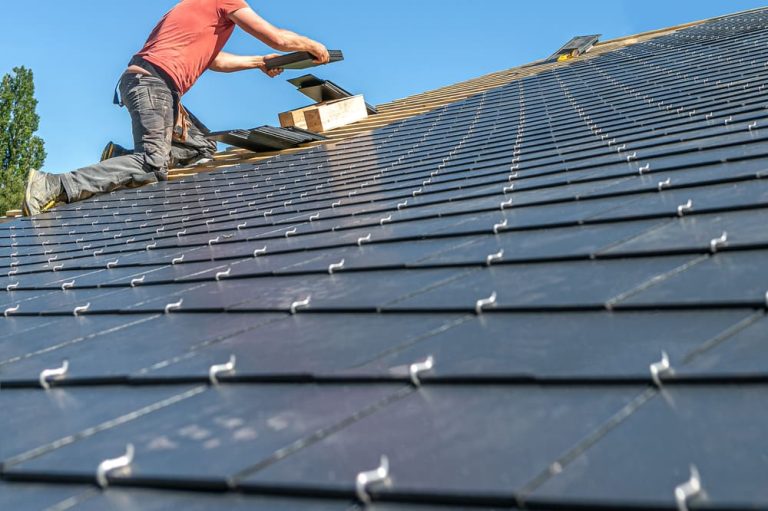Planning to replace your roof soon? Then you might be wondering whether the expense can offer any relief during tax season. The truth is, a new roof is not always tax-deductible, but there are exceptions worth knowing, especially if your roofing upgrade includes energy-saving features. With new federal programs and recent updates to tax guidelines, homeowners now have better chances to receive incentives for certain kinds of roofing improvements.
Let’s dive into what qualifies and what does not, where roof installation tax benefits might come into play, and how to ensure your roofing project meets the criteria to claim the credit.
Are Roof Replacements Ever Tax-Deductible?
For most homeowners, the cost of replacing a roof does not result in a tax deduction. The government sees this type of upgrade as a personal expense. If the work simply involves swapping out old shingles for new ones, there is usually no opportunity to write off that amount on your tax return.
However, things change when the property is used differently. In the case of a rental property, a roof upgrade may be labeled a capital improvement. This means it adds lasting value to the building and qualifies for depreciation over time. You cannot deduct the full price in one year, but you can spread out the benefit for multiple years.
Homeowners who operate a business from home can also explore partial deductions. If your roof covers the area used exclusively for business, then a portion of the roof replacement cost may qualify. These considerations for rental properties and home office spaces make it easier to find potential deductions.
Even for those who cannot claim an upfront deduction, a new roof still plays an important role in long-term tax planning. When you sell your home, the cost of the roof gets added to the cost. This reduces the taxable portion of any profit you make, which could minimize your tax liability later.
Finally, if your new roof includes energy-saving upgrades, you could qualify for an energy-efficient roof tax credit-this is often more valuable than a simple deduction.
Understanding the IRS Roof Replacement Deduction
According to IRS roof deduction rules, the majority of roof replacements on primary homes are not deductible. However, the agency offers tax credits for roofing projects that meet specific energy standards. Federal guidelines describe which improvements can reduce your tax bill, and how homeowners should report them.
The main difference lies in the type of work done. Repairs, such as fixing a few shingles or patching a leak, usually do not qualify. But if the roofing project involves installing materials that improve energy performance, then homeowners can qualify for federal tax credits.
The IRS roof replacement deduction is more likely to apply when the materials meet defined energy criteria. Energy-efficient roofing materials like reflective asphalt shingles and solar-integrated tiles are the most common products used to qualify. They must meet Energy Star efficiency standards or have approval under the current government guidelines.
It is important to gather proper documentation during installation. You will need receipts and manufacturer certifications that confirm your materials meet the requirements. Those who complete IRS Form 5695 can submit this proof when they file their tax return.
As always, we recommend speaking with a licensed tax professional to make sure your roofing materials qualify and that you fill out the IRS form correctly. That way, you know your tax savings on roofing are claimed fully and accurately.
Tax Credit vs. Tax Deduction: What’s the Difference?
When it comes to taxes, there is a big difference between deductions and credits. A deduction reduces your taxable income. So if you earned $60,000 and you qualify for a $5000 deduction, then your taxable amount becomes $55,000. That leads to a smaller tax bill, depending on your tax bracket.
On the other hand, a tax credit lowers your tax bill directly. If you owe $2000 and receive a $600 credit, your tax bill drops to $1400. That is a direct benefit and usually more valuable.
In most cases, homeowners claim a home improvement tax credit for their roofing upgrades, not a deduction. This credit can be claimed only when the roof installation meets energy efficiency standards. That is why it is called the energy-efficient roof tax credit. A simple roof replacement without those features does not qualify.
If you want to maximize your tax savings, it is smarter to focus on materials and techniques that meet the criteria for credits, not general repairs or replacements.
Energy-Efficient Roofing and the Inflation Reduction Act
The Inflation Reduction Act renewed interest in energy-efficient home improvement projects across the country. This law expanded the federal energy-efficient home improvement credit, making it easier for homeowners to reduce their taxes through qualifying projects.
For roofing specifically, the efficient home improvement credit covers up to 30% of eligible costs. However, not all roofs make the cut. The government has strict rules about which roofing materials qualify. Examples include metal roofs with special coatings, asphalt shingles with solar reflection, and tiles that generate electricity through solar energy.
Homeowners can claim up to $600 per year for qualifying roofing materials. That total is part of a larger limit of $1200 for all energy upgrades during a single calendar year. This means it can be helpful to combine a roof replacement with other home updates like insulation or gutters, heat pumps, or solar panels. Doing so may help you reach the upper limit and increase your savings.
Those who install solar features on their roof may also qualify for the residential clean energy credit. This is separate from the energy-efficient roofing materials benefit and can cover more of the cost depending on how the solar system is set up.
To receive the energy-efficient roof tax credit, you must make sure your materials meet Energy Star standards, and you keep the official documentation. Some projects now require a product identification number from the manufacturer. Without this step, even a qualifying roof may be denied.
Tips for Timing and Maximizing Your Tax Benefits
Roof installation tax benefits often depend on timing. You must claim the credit in the same year the roof is installed, not when it is ordered or delivered. That means proper scheduling is important, especially if you are trying to align the project with your tax strategy.
One way to maximize your credit is to combine the roofing project with other upgrades that also qualify for the energy-efficient home improvement credit. Pairing the installation with energy-efficient metal roof systems, new windows, upgraded insulation, or solar panels can help increase your benefit.
Keep in mind that you do not need to itemize your deductions to claim this particular credit. Whether you use standard deductions or itemized deductions, you may still qualify as long as the work is done properly and you have the correct documents.
Choosing a professional contractor like Pinnacle Home Improvements helps ensure you are selecting roofing materials that qualify under IRS roof deduction rules. We make it easy to get the right certifications and verify that your products meet energy standards, helping you avoid delays and errors when you file your tax return.
Where to Learn More About Roofing Tax Incentives
If you are planning your roofing project and looking for guidance, there are several helpful resources available. A homeowner’s guide to tax incentives should start with a full understanding of the roof replacement cost and the long-term value each material offers.
Federal tax credits are clearly outlined on official government websites, including the IRS and Energy Star portals. There, you can learn how to complete IRS Form 5695, find products that meet Energy Star efficiency standards, and explore updates to the Inflation Reduction Act.
Our website also features articles that cover common topics like when to schedule a roof installation, how energy-efficient upgrades improve your return on investment, and how homeowners’ insurance may cover part of the replacement cost in certain cases.
If you need a roof replacement project or help identifying energy-efficient roofing materials for your home, Pinnacle provides expert support every step of the way.
Contact Us for Help with Your Tax-Smart Roofing Project
Choosing a roof can be a challenge, and sorting through tax credits makes it even harder. We are here to simplify the process and make sure your roofing project helps you save on taxes while improving your home.
Whether you want to claim the solar tax, explore roof replacement tax-deductible options for your rental property, or learn how siding insulation, and gutters may play a role in federal tax credits, we can help.
So whether you are focused on tax benefits, lowering roof replacement tax, or just protecting your home long-term, Pinnacle Home Improvements is your partner for smart, reliable roofing work. Contact us today to schedule your quote and begin your next energy-efficient home improvement project















